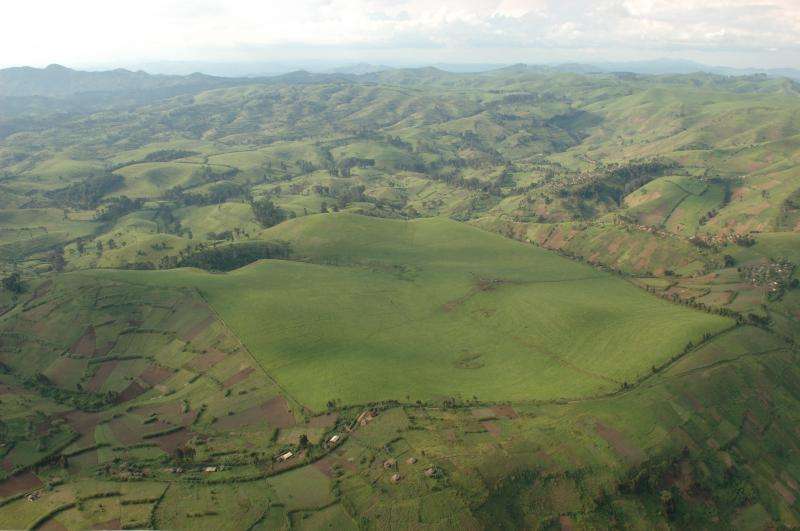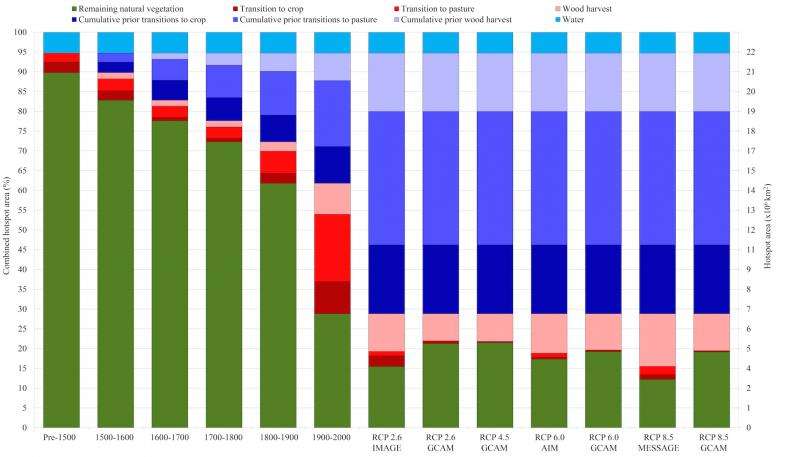Study links climate policy to extinction trends

A new study by the University of Maryland's Department of Geographical Sciences assessed the potential impact of future land-use scenarios, including climate change mitigation, on the loss of habitable areas in "biodiversity hotspots"—distinct biogeographic regions with extremely high numbers of endemic species.
The study, led by Ph.D. student Samuel Jantz and published in the journal Conservation Biology, estimated the loss of natural vegetative cover under four different climate change policy scenarios based on data provided in the latest Intergovernmental Panel on Climate Change report, and generated extinction estimates by cross-referencing areas of vegetative loss with the biodiversity hotspots.
"Studies have shown that actions need to be taken to avoid extinctions driven by climate change; however, the impact of land-use decisions associated with climate policy have not received much attention. Our study demonstrates that land-use needs to be considered when formulating climate policies to both avoid climate change and preserve areas rich in biodiversity," Jantz said.
Relative to current estimates of the extent of natural vegetation, the study finds that natural vegetative cover in biodiversity hotspots could be reduced by an additional 26-58 percent, depending on climate policy, and could result in hundreds to thousands of additional extinctions by 2100. The study concludes that future extinctions could potentially be reduced by incorporating habitat preservation into scenario development to reduce projected future land-use changes in hotspots, or by lessening the impact of future land-use activities on biodiversity within hotspots.
"How societies will meet growing demands for food and fiber while simultaneously working to mitigate climate change may critically affect biodiversity by increasing land-use activities in sensitive areas," said UMD Professor George Hurtt, whose graduate-level class on land cover land-use change inspired the work. "Interestingly, the study finds that climate mitigation and biodiversity protection are generally aligned, with increased efforts at climate mitigation corresponding to reduced rates of future habitat and biodiversity loss in three-fourths of the cases evaluated."

This study also includes fellow UMD Ph.D. students Qiongyu Huang and Rachel Moore; Faculty Research Assistants Brian Barker and Jacob Noel; Assistant Research Professor Louise Chini, Professor Hurtt; and international expert Dr. Thomas Brooks of the International Union for Conservation of Nature.
"Our study is an example of the benefits that can come from involving students in research. What originally began as a class project developed into a manuscript published in a great journal," Jantz said.
Journal information: Conservation Biology
Provided by University of Maryland

















